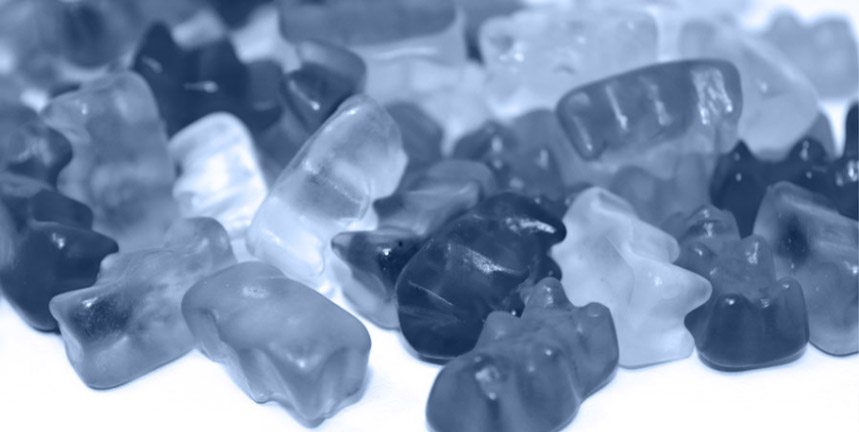
WSLCB Issues New Policy on Cannabis Edibles
The Washington State Liquor and Cannabis Board (WSLCB) announced this week that it is abandoning its previous candy ban for a different approach, in which cannabis-infused edibles and their packaging will be restricted to 16 specific colors. The WSLCB is closing out the year with a flurry of policymaking, and cannabis businesses should take note. We’ve been reporting on a number of recent developments at the WSLCB, including new rules on expanded access for businesses to CBD and on the WSLCB’s surprise ban on cannabis-infused candies. There are other important updates we’ll fill you in on next week, but we want to first provide an update on the edibles policy changes.
I. Background
Read out the full background story on my last post. Back in October, the WSLCB held its regularly-scheduled board meeting in which two staffers gave a presentation that banned all cannabis-infused candy, both hard and soft, regardless of color or shape. Chocolates, baked goods, sodas, and other products would continue to be allowed to be sold without change. This came to the cannabis industry as a surprise, as it was done without industry-input and it was presented without warning or fanfare.
Washington’s three major trade groups then engaged extensively with the WSLCB and offered a joint proposal (the Cannabis Alliance later issued its own statement separate from the other two trade groups). The WSLCB emailed a draft brief to the trade groups on November 19th which abandoned the prohibition of products by type (i.e. candy) it had presented a mere few weeks prior, and instead focused on disallowing “brightly colored products” and products “similar to commercially available products intended for or that target youth or children.” For time, it appeared this policy would extend beyond edibles and affect all cannabis products. The WSLCB then stated that it would present a final draft of its edibles policy to the board at their November 28th meeting, but the draft was presented.
II. The WSLCB’s Most Recent (Final?) Policy
On Monday, the WSLCB issued BIP 10-2018, which again made no mention of a prohibition-by-type and instead focused on colors of products and packaging. The policy statement is provided here in its entirety:
The following requirements apply to all marijuana infused edible products and their packaging and labeling:
- Only colors and shapes from an approved list on the WSLCB website can be used.
- A white or cream background with brown or black lettering and up to three accent colors from the approved color list will be provided on the WSLCB website. A percentage or gradient of an approved color counts as one color.
- A grey or black background with brown or white lettering and up to three accent colors from the approved color list will be provided on the WSLCB website. A percentage or gradient of an approved color counts as one color.
Forget about bright colors!
- A tan or brown background black or white lettering and up to three accent colors from the approved color list provided on the WSLCB website. A percentage or gradient of an approved color counts as one color.
- A full color photo or photo in the chosen accent color of the product is allowed.
- Packaging with a clear window is permitted.
- Company logos are permitted. Examples of allowable logo displays are available on the WSLCB website.
The document states that this policy takes effect immediately.
III. Confusion or Clarity?
The policy states twice that the intent is to provide clarity on the issue, and it did so partially. Edibles manufacturers that were facing the real prospect of shuttering their doors can now breath a sigh of relief. Candies and chews will not be banned after all. But the WSLCB has yet to provide the allowable colors, and it’s still unclear (without further communication) as to what processors should do at this point with their existing products. Can previously approved products still be sold if they don’t qualify under these rules? What about new products?
BIP 10-2018 unfortunately makes no mention of BIP 05-2018, an interim policy also on packaging but concerning business trade names and harvest dates rather than edibles or colors. The interim policy makes a distinction between the old and new rule schemes. Most importantly, the interim policy states, “Licensees will have until June 1, 2019, to submit all packaging and labeling with the new requirements for products approved under the old requirements for approval by the board.” The interim policy also states that effective January 1, 2019, “licensees MUST use new packaging and labeling rule requirements adopted by the Board on May 2, 2018.” If you’re confused, don’t feel bad. I spoke with two staffers at the WSLCB today, and what you need to know is essentially the following:
- If you have products that have already been approved and produced, you can sell these products until June 1, 2019
- one of the staffers said this date may be pushed back to January 1, 2020, but it was not yet confirmed
- Beginning January 1, 2019, all edibles must be produced according to the new color rules
- These rule changes only affect edibles, at least for now
The WSLCB will be hosting a webinar next week at 10am on Tuesday, December 18, 2018, and you can register here. It is expected that the webinar will unveil the 16 colors to be allowed, and viewers will be able to ask questions directly to the WSLCB.
UPDATE: Based on the information from the 12/18/18 webinar, the WSLCB has clarified that the 1/1/2020 deadline will be put to a Board vote in January. The WSLCB also issued a limited number of shapes that edibles must adhere to. The webinar’s powerpoint presentation will be made available on the WSLCB’s website.



